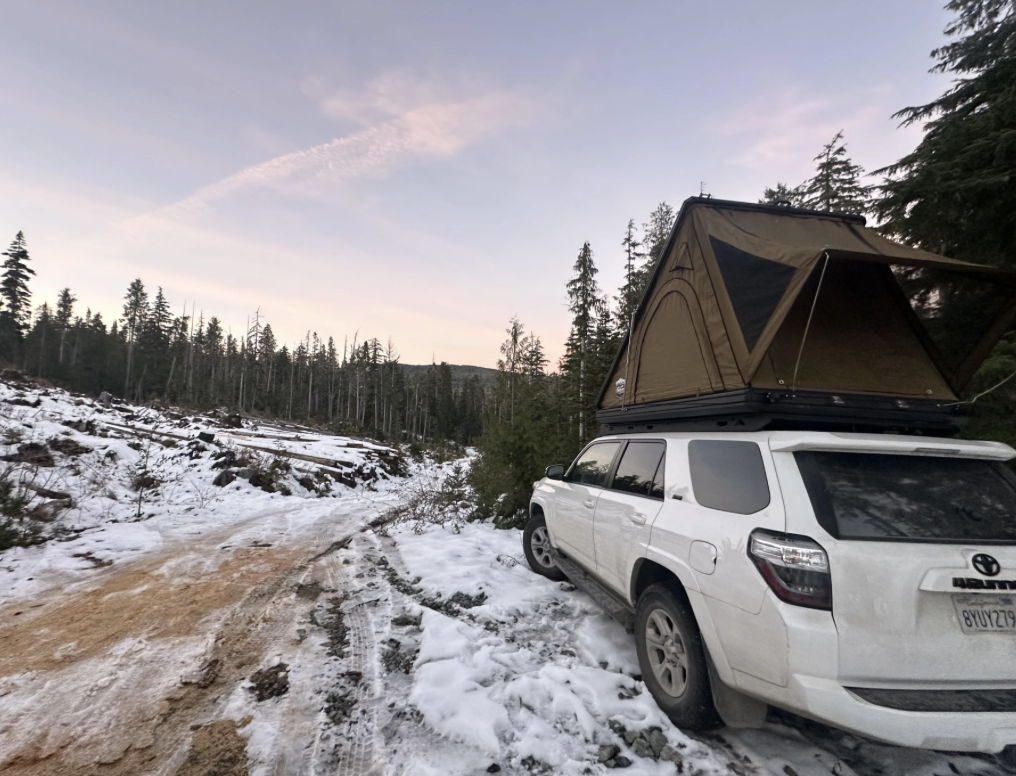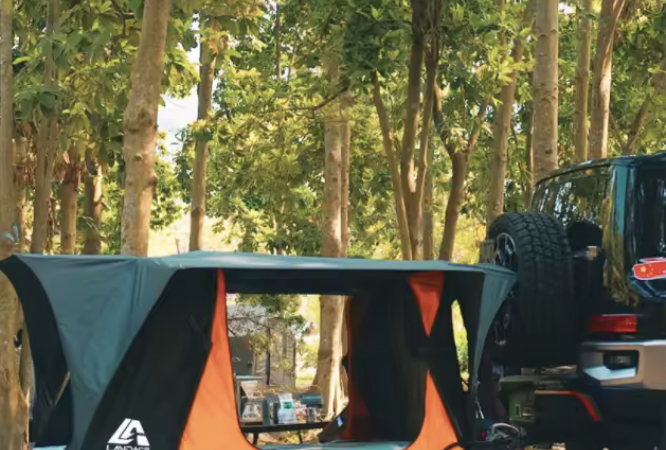Winter trips hit different: wide-open campsites, crisp air, zero crowds. Make it safe and comfy with a tight plan and the right kit.
Before you go (non-negotiables)
- Check conditions and closures. Look up park alerts, road status, avalanche forecasts, and weather windows before you commit your route. Save offline maps.
- Dial winter driving. Real winter tires, full tank, and a legit car kit (scraper, shovel, abrasive material, booster cables, headlamp/flashlight, blanket). Tell someone your plan and ETA.
- Cold-injury basics. Layer (no cotton), keep skin covered, and know hypothermia/frostbite signs.
Campsite & setup
- Pick safer terrain. Stay well away from avalanche paths, runouts, cornices, and terrain traps; avoid snow-loaded branches (“tree bombs”).
- Leave No Trace (winter edition). Camp on durable surfaces (snow/rock), 200 ft from water, and de-build snow walls when you leave.
- Kitchen & water. Snow melts take fuel, plan extra. Insulate bottles; warm food/water = warm humans.
Sleep system that actually works
- Bag rating you can trust. Use ISO/EN ratings; aim at your comfort number, not the “survival” extreme.
- Pad R-value matters more than you think. For real winter, target ~R-6–7+ total under you (pad or stacked pads).
- Why rooftop tents help in winter, being off the ground cuts conductive heat loss vs. cold soil/snow; many RTTs add beefier fabrics/liners for the cold. Vent a little to fight condensation.
The 14-item winter kit (keep it tight)
- Four-season sleeping bag (ISO/EN rated) at or below your expected lows (choose by comfort rating).
- High-R sleeping pad setup (single R-6–7+ or stack pads to that total).
- Diesel heater (externally exhausted) + CO alarm — heat the annex/tent safely; keep exhaust outside, crack a vent, and never run any fuel burner without a CO detector.
- Annex or awning room (with walls) — dry staging area for boots/cooking and a warm bubble out of the snow/rain. (Use proper ventilation.)
- Layering system — wicking base, puffy mid, weatherproof shell; mitts beat gloves in deep cold. Pack face protection.
- Headlamps/lanterns + spare batteries — cold kills batteries fast; store spares inside jacket.
- Hot drinks kit + insulated bottles — keep water from freezing and morale high.
- Snow-capable stove & fuel — white gas or a cold-friendly canister setup; plan extra for snowmelt.
- Traction boards + shovel — for snow berms, icy pull-outs, and camp digging. (Abrasive material helps too.)
- Vehicle winter kit — scraper/brush, booster cables, abrasive material, blanket, charger, and first aid. Keep it in the rig.
- Navigation + SOS — offline maps, paper map/compass; tell someone your exact plan and check-in time.
- Avalanche kit (if anywhere near avy terrain) — beacon, probe, shovel, and the training to use them. If you don’t have both gear and skills, pick a non-avy zone.
- Emergency insulation — space blanket or heated vest/blanket for oh-sh*t moments; repair kit (cold breaks plastic).
- Power that works in the cold — lithium loses steam below freezing; consider cold-tolerant options or keep batteries warm. (New sodium-ion power stations are emerging specifically for sub-zero temperatures.)
Places to favour vs. avoid (quick takes)
- Good bets: plowed-access parks with winter programs, sheltered valleys/ridges with zero avalanche exposure, established winter camp areas with toilets and bear-safe storage. Check the specific park page for winter access quirks.
- Hard passes: avalanche paths/runouts, creek bottoms (cold sinks/terrain traps), under heavy snow-loaded branches, wind funnels.
Safety notes you shouldn’t skip
- Crack a vent to reduce condensation/CO risk; never run unvented fuel burners in sealed spaces. Carry a CO alarm.
- Keep moving, keep eating, keep hydrating; swap wet layers fast. Learn hypothermia signals and response.
Here at Rooftop Tents, we are a Vancouver Island–based and locally owned business. We use, install, and ship the gear we recommend: rooftop tents, bed racks, cross bars, awnings (and annex rooms), portable fridges, and the cold-weather add-ons that make winter trips actually enjoyable. Questions about fitment, rack limits, or route ideas on the Island? Call 250-740-1844 and we’ll get you dialled.








Leave a comment
Your email address will not be published. Required fields are marked *